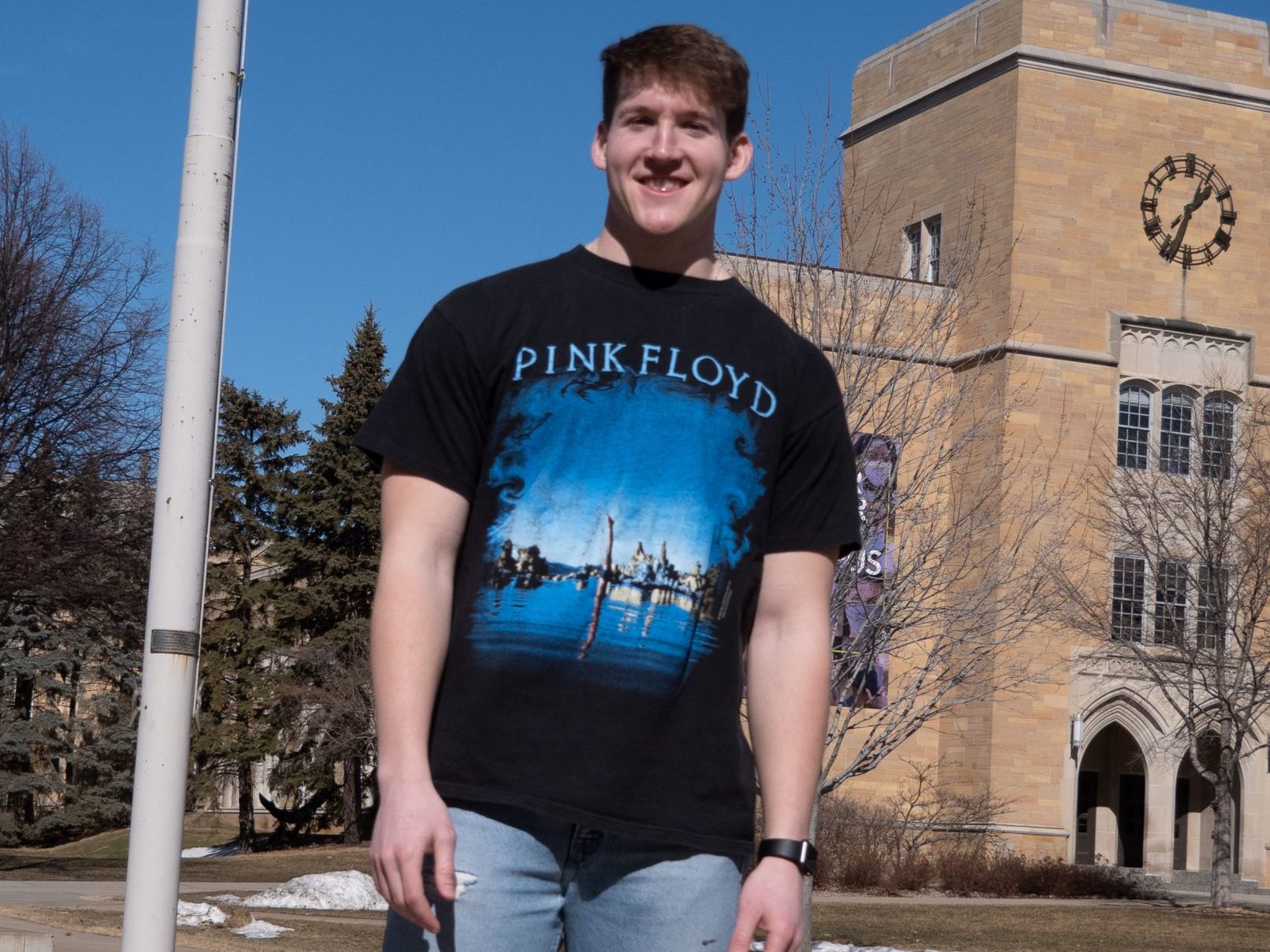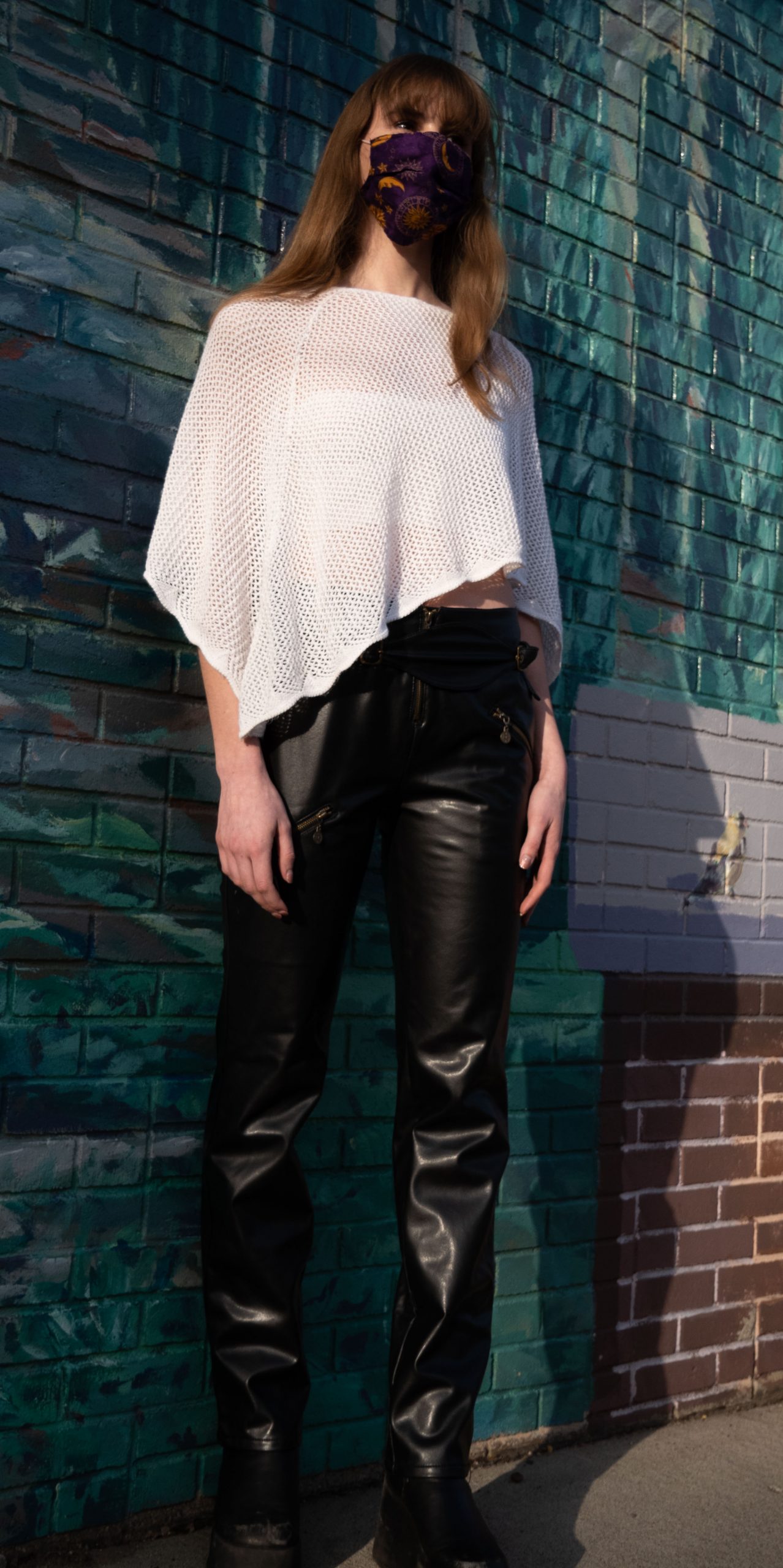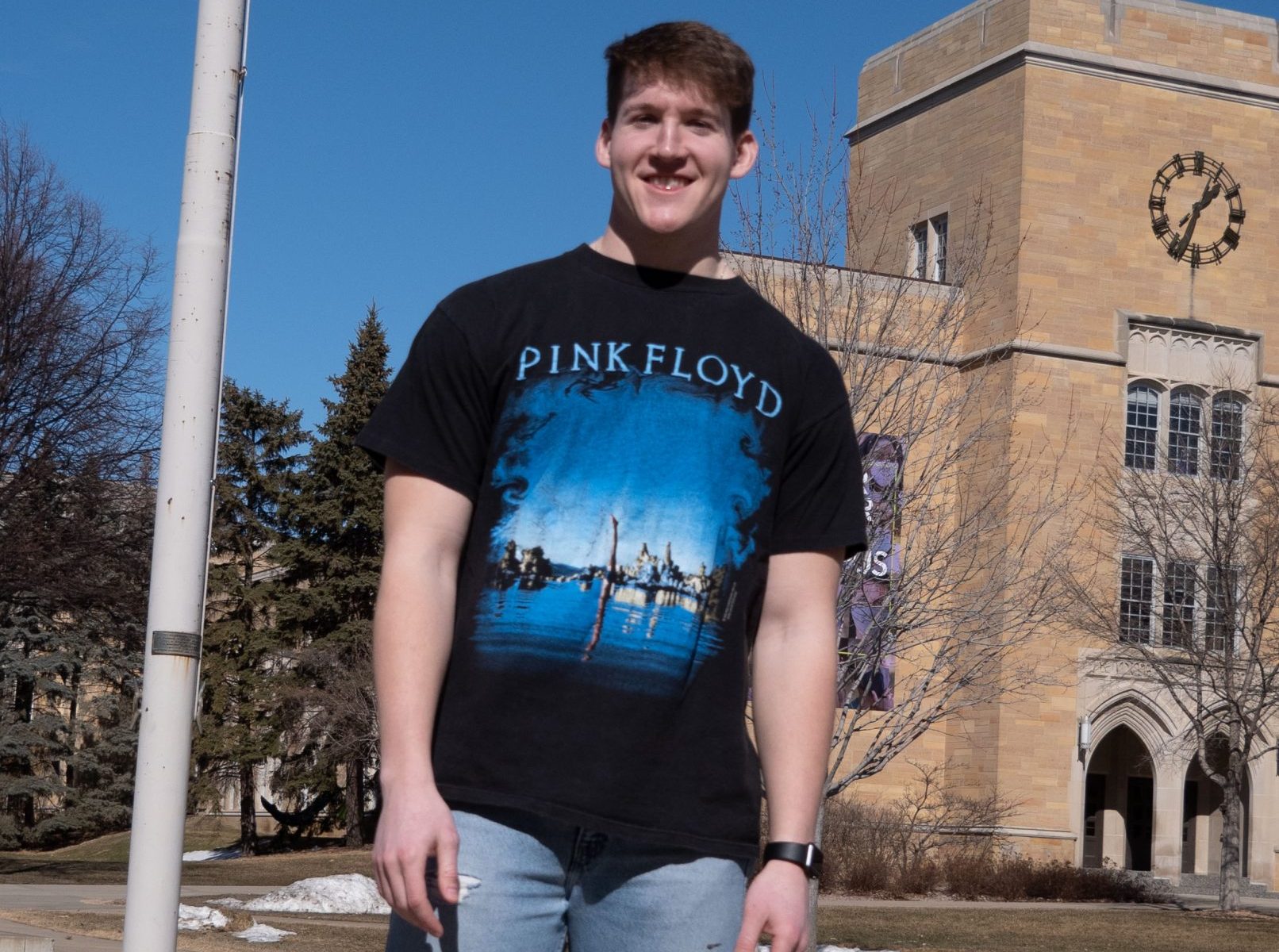
Junior Cade Maurer poses in the quad wearing a thrifted outfit. Students shopping at the many second-hand stores in the Twin Cities are staying stylish without breaking the bank. (Maddie Combs/TommieMedia)
Students shopping at the many second-hand stores in the Twin Cities are staying stylish without breaking the bank, and with their tactics for navigating the racks of unorganized clothes, they aren’t breaking a sweat as they search for hidden gems from closets-past.
Thrift shops and vintage clothing stores can be treasure troves of unique, affordable and high-quality items for shoppers willing to do some digging and thrifty St. Thomas students have some second-hand shopping strategies that make discovering great pieces even easier.
Cade Maurer, a St. Thomas junior with a wardrobe largely consisting of vintage clothing, admits that shopping at second-hand stores can require more effort than shopping at retail locations.
“Thrift stores can be pretty disorganized and barely anything there is sorted by size or style,” Maurer said. “You need to spend more time digging through everything, but you always find better stuff.”
With dedicated digging, Maurer has struck gold and found pieces not available anywhere else, most notably a shirt from Pink Floyd’s 1975 “Wish You Were Here” tour that he found at The Cat and the Cobra, a vintage clothing store in Minneapolis.
Luck played a role in Maurer’s discovery, he said, but he doesn’t rely on luck alone to find cool clothes at vintage stores. One of Maurer’s tricks for making thrifting easier is assessing the material of an item before even looking at it, helping narrow down the options and ensure quality finds.
“These places have giant racks of random clothes and I’ll just be whipping through everything, but I know pretty quickly what I might like based on the feel of the shirt,” Maurer said. “I like thicker cotton and older styles, so if I feel something like that I’ll look at it right away. I skip anything that feels thin and cheap.”
While Maurer’s interest in thrifting came about because of the bargain prices on high-quality attire, sophomore Amelia Reed switched to thrifting for a more environmentally conscious shopping experience.
Researching the fashion industry, Reed said she discovered that the production of cheap, trendy fashion comes with unfortunate repercussions, and that the industry is “overall, just really bad for the environment.”
According to the UN, the fashion industry is believed to be the second most polluting industry in the world. While our closets have grown with the onslaught of cheap, trendy fashion, so have our landfills. Studies show that about 85% of textiles produced every year end up in the trash and the average textile waste per person in the U.S. is about 66 pounds every year.
Statistics like these were enough to make Reed a thrifting convert.
Like Maurer, Reed suggests judging the material of second-hand attire, yet she worries more about functionality than quality. Her main concern is whether an item will be able to survive a cycle through her washing machine.
“I make sure nothing I buy has a hand-wash only or dry-clean only label, because I never dry-clean my clothes,” Reed said. “Looking up brands or fabrics can be helpful for that sort of thing.”
The most difficult part of thrifting for Reed is finding clothes in the correct size.
“You might find something you really love that’s just a size too big or a size too small and you’re out of luck, but that only makes it more exciting when you do find something that fits well,” Reed said.
To get the most out of her thrifting endeavors, Reed always plans her trips for days when she has ample time to thoroughly scavenge the racks and is prepared to try on plenty of clothes.

Thrifting enthusiast and St. Thomas junior Anika Barland said she could spend an entire day sifting through racks of second-hand clothing, but she knows that isn’t always realistic. In a time crunch, Barland recommends focusing on one or two types of clothing and visually scanning those specific racks to see if anything catches the eye.
“When I don’t want to look through every single piece, I’ll only pick out items if the color, pattern, fabric, material, or some other aspect of the piece is interesting to me. That way, I don’t need to waste my time on things I don’t care about,” Barland said.
While the lower cost and environmental impact of second-hand threads are important factors in Barland’s thrifting habits, the unknown histories woven into the clothes themselves are what she finds most appealing.
“One of my favorite things is finding a piece that I really love and imaging all of the people who wore it before me,” Barland said. “Like, did they wear this dress to a super cool party? Did they break up with their toxic boyfriend in this? It’s really fun to think about the energy I’m carrying as I’m wearing it.”
Barland goes on weekly visits to the second-hand shops around campus, where she can ask the employees for more information about the history of a piece.
“It feels like a treasure hunt every time I thrift shop,” Barland said. “It’s the journey of it that’s the most exciting part.”
Lauren Price can be reached at lauren.price@stthomas.edu.


